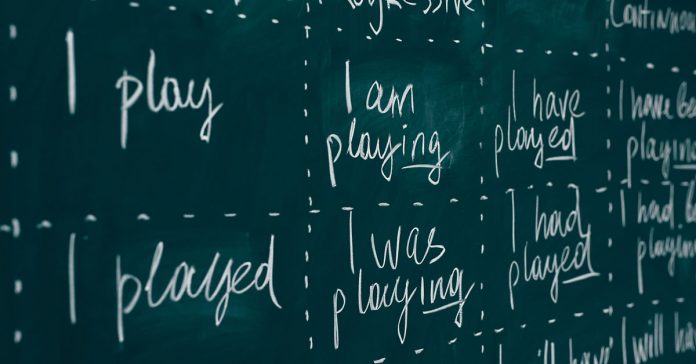Learning a foreign language is a pretty big commitment. Whether you’re just starting out, or trying to grasp obscure figures of speech, there’s always room for improvement. If you study hard enough it may not take that long to become fairly fluent. To be really proficient, you’ll need to be ready to study. Of course, there are also a few shortcuts if you want to get to your destination a bit quicker. In this article, we’ll help you with those shortcuts, and give you 8 incredible techniques for learning a language.
However, don’t be afraid to take on something big like learning a second language just because someone told you it would be frustrating. Just about everything gets frustrating at some point or other. We keep working at it because the end result is worth it. No matter how hard it seems, keep going! The feeling of being able to communicate in another language is one of the best things in the world. You’ll be glad you didn’t give up.
Techniques for Success
If you’ve decided to learn a second language, make sure you use the best techniques to study as effectively as possible. Good learning techniques are crucial to your success. If you just go with the first option that presents itself, you could end up wasting a lot of time. A lot of language-learning programs teach vocabulary that almost nobody would need to use. It might be rare zoo animals, items of clothing, or whatever. Other teaching methods are so mind-numbing that it’s almost impossible to remember anything for more than a day. But there are also plenty of great learning methods out there! Just be selective and use common sense when you’re choosing the type of curriculum you’ll use. That way you focus on what you’re doing, and achieve fluency that much faster.
Below, you’ll find some of the best techniques to help you learn a second language. There’s something for everyone. This is true whether you learn best with real-world practice, or your style leans more towards consistent repetition from flashcards or a good textbook. Use this list to get acquainted with different learning techniques. There are way more options out there than just joining a class or going through a textbook. Go for whatever interests you! The more you enjoy learning, the faster you’ll progress.
1. Find a practice partner

Besides finding the right language program, this is probably the most important thing you can do. Some programs include simulated “conversations”. Talking with a practice partner is different. You’re learning to think on your feet and react to what’s going on around you.
There are plenty of places you can find someone to practice speaking with. Some universities host meetups of people from various countries who want to practice speaking a different language. There are also options online. You could either pay someone to help you practice. You can find someone you could help with English, in exchange for them helping you with the new language you’re studying. It doesn’t necessarily have to be a native speaker at first. When you’re just starting out, the main thing is that they’re confident enough to hold a conversation themselves. If you happen to be in a group setting, don’t be shy about helping out people who aren’t as far along as you. Teaching someone else what you already know is actually a great way to solidify what you’ve already learned.
Speaking is much different than just writing out sentences. When you’re talking with someone in another language, you may jump from topic to topic. You may have to go outside your comfort zone in order to keep the conversation going. Don’t let this stress you out, though! The right language partner will give you time to find the word you’re looking for, or help you out if you need them to. This is the number one incredible technique for learning a language.
2. Research which language program you want to use
If your learning style requires structure, then a comprehensive language-learning program is the way to go. This could be a textbook/CD combo with writing and listening exercises. It could be a more interactive online program with customized flashcards and videos alongside vocabulary drills. The best programs will include a mix of reading, writing, listening, and speaking practice for the best outcome. Most language students want to be able to use their new skills in every context. Make sure you’re practicing more than just reading or writing.
For the language students who prefer a more traditional route, the local library could provide quite a few options. They should have a selection of language books and CDs, and maybe even subscriptions to online language programs. If you know you want to buy a curriculum, but don’t want to spend money on something that may not be a good fit, this is a great solution. It’s a way to get a preview of the options before you commit to something. Make sure you talk with a librarian to find out what they offer in terms of language programs. All the choices might not be listed in one place.
You can also look for language-learning programs on Google Books or Amazon.com. Do keyword searches like “learn Russian” or “beginner Mandarin”, and look through the results to find a comprehensive curriculum. On Google Books you can access previews of the material, so you can see if it fits your learning style or not. Product listings on Amazon often have previews that you can check out. There will also be reviews from other users that will help you decide if the book would be a good fit.
Even though it could take a little while to find the right language program for you, it’s still a good idea. It’s a lot less frustrating to spend time at the beginning, rather than waste time when you decide that your first choice isn’t working for you. You don’t want to be forced to switch programs in the middle of the process. Each program will have its own teaching pattern, and it could be pretty confusing to jump from one to another.
3. Put labels on everything you can

This is a great immersion trick if you can’t visit the country where your second language is spoken. Buy some sticky notes and label everything in sight. Not only will you learn the vocabulary words, but this will help you get used to thinking in another language. You can even start leaving yourself notes in the target language – what you need to buy, errands to run, whatever simple things you’d be writing down anyway. You could even color-code the labels to differentiate categories, such as noun genders in Spanish or tones in Chinese. It’s another incredible technique for learning a language!
If that sounds like a lot of work, you could always buy a set of Vocabulary Stickers. Available in nine languages, these stickers have the names of just about every household item you could think of. They don’t cost much, and having the labels ready to use means half the work is done for you!
When you’re out and about, you obviously can’t have labels on everything you see like you can at home. Instead, write down the names of objects that you haven’t learned yet. You can look them up when you get home.
Bonus tip: once you’ve gotten comfortable with your target language, set your electronic devices to display the new language instead of English. This will give you more exposure, and you won’t even have to travel for it!
4. Practice with flashcards regularly
This is one of the most common and popular language-learning strategies. You’ve probably even used flashcards to learn information in your native language. Keep in mind though, there’s a right and a wrong way to use flashcards.
The wrong way is to just force yourself to stare at a succession of cards as you go through the stack. This approach can work if you’re cramming for a test, but that’s all. it’s rare that anyone can remember what they learn this way long-term. If your interest isn’t somehow maintained throughout the exercise, your brain will basically fall asleep. They say that you have to see a vocabulary word 20 times on average in order to learn and remember it. That’s assuming that you’re fully engaged with the material. You should also decide how many words you can commit to learning per day.
And that brings us to the right way to use flashcards. If the problem is that they’re boring, then the solution is to make them interesting. There are all kinds of ways to make the cards you already have more distinctive. Sort them into smaller sets by category, or pick out just a few cards at random and use them to make up a ridiculous story. Don’t spend long periods of time reviewing cards; instead, alternate card review with other study methods or activities. This way, it’s easier to concentrate during the time you’re spending on flashcards, and you won’t have to drag yourself through lengthy exercises. An incredible technique for learning a language.
5. Read news articles in your target language

Even if you don’t quite understand everything, reading foreign-language news articles can give you some great practice. You’ll also learn more about the culture that the language comes from. News articles from any major outlet don’t typically use obscure or difficult vocabulary, so it’s perfect for someone trying to reach basic fluency. A good place to start is with newspapers, which are often published online. Just search something like “newspapers in Spain” to find a variety of options. You’ll get a feel for how the language at a basic level, and as your comprehension improves you’ll start picking up different phrases and terms of speech.
Find something interesting to read, and see how much you can understand without looking up too many words. You might be surprised at how much you improve by knowing a few key words. If you’re really struggling, you can put the article through a translation engine, give it a quick read, and then go back to the original language and see how you do. If you already know where the story is going, it’ll be much easier to identify key words and patterns. You’ll notice that many of the words feature in multiple articles, which means that they’re important for everyday communication. These are the words you’ll want to write down and study later on.
6. Don’t be afraid of mistakes
Linguists have always been interested in how kids learn languages. They may speak two languages for family reasons, or maybe a close friend who’s from another country. Adults rarely get the chance to learn a language in a truly immersive environment, so there’s a lot more conscious effort involved. People like to say that kids can pick up a second language so easily because their brains “are like sponges”, implying that adults will have a harder time learning regardless of what they’re studying. But that isn’t necessarily the case. Learning ability isn’t something that you lose with age, it’s just something that you might forget about.
As adults, our neural circuits are already set. We have to form new ones when we learn another language. The main obstacle isn’t learning, it’s being open to new ways of thinking. This means a lot of experimentation and guessing, and a whole bunch of mistakes. This kind of experimentation is another incredible technique for learning a language.

Teach yourself to stop being afraid of making mistakes. Just like a kid chattering away about something they discovered, use the words you know and ask about what you don’t. You might sound a little silly sometimes, but chances are the person you’re talking with will think you’re pretty gutsy for making the effort. Learn how to ask “what does this mean?” and “how do I say this?”, and don’t be shy about asking for help. No matter how little you know of the language, put yourself out there and start talking. And here’s a pro tip for you: if you need a confidence booster, try out some phrases you’ve just learned on friends and family. They’ll be both confused and impressed, and you might even realize that you know more than you thought.
7. Set realistic goals
Most people set out to master a second language because they have a specific goal in mind. Maybe they want to live in another country for a while, or they’re doing it to open up job possibilities. Some people are interested in studying another culture in its own language. Whatever your reason is, setting goals will help you reach the end result faster.
Say you want to be fluent in eight months – if you’ve got the time to study, that’s definitely possible. The goal is that you can have a conversation with a native speaker without having to search for words as you go along. In order to reach this goal, you could set smaller goals, either weekly or monthly, whatever seems reasonable to you. It could be something small like “learn 30 words related to bus travel and renting an apartment this week”, or a longer-term goal like “read and understand news articles after 5 months of study”. Setting goals not only keeps you on track, but gives you a concrete sense of how you’re progressing, which is important if you don’t want to get burned out.
8. Have fun!
Just because it takes hard work doesn’t mean you shouldn’t enjoy it! When you learn a language, you start to discover a new way of thinking that you never could have learned from your own culture. Challenging yourself is great, but putting pressure on yourself probably isn’t. If you feel like you’re stuck, switch things up. Do something different each day of the week: study from a language program one day, chat with a practice partner the next day, watch a foreign-language movie with a dictionary on hand the day after…there are all kinds of options. Get creative, and remember that as long as you’re somehow processing your target language, it still counts! Having fun is our final incredible technique for learning a language.
These are just a few of the things you can do to learn a second language, some tips that anyone can use in their studies. You might not need to use all of these techniques, but that’s up to you. There are also more detailed guides out there, if you want to explore this topic further. As long as it gets you closer to your goals, it’s definitely worth a try. If you have thoughts about out incredible techniques for learning a language, leave us a comment below!










